The curriculum at the Academy of Media Arts is grounded in the Common Core State Standards (“CCSS”) and meet both graduation and university entrance requirements. AMA believes that the rigor of CCSS involves creating an environment conducive to growth and high expectations for learning. This means believing in scholars, encouraging scholars to not give up, and supporting scholar learning. In addition to assessment, AMA scholars demonstrate learning of CCSS using a variety of ways such as through the use of echnology, projects, and presentations, which highlights scholars’ creativity, collaboration, critical thinking, and communication skills.
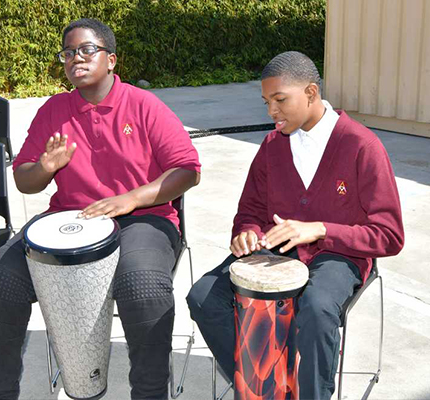
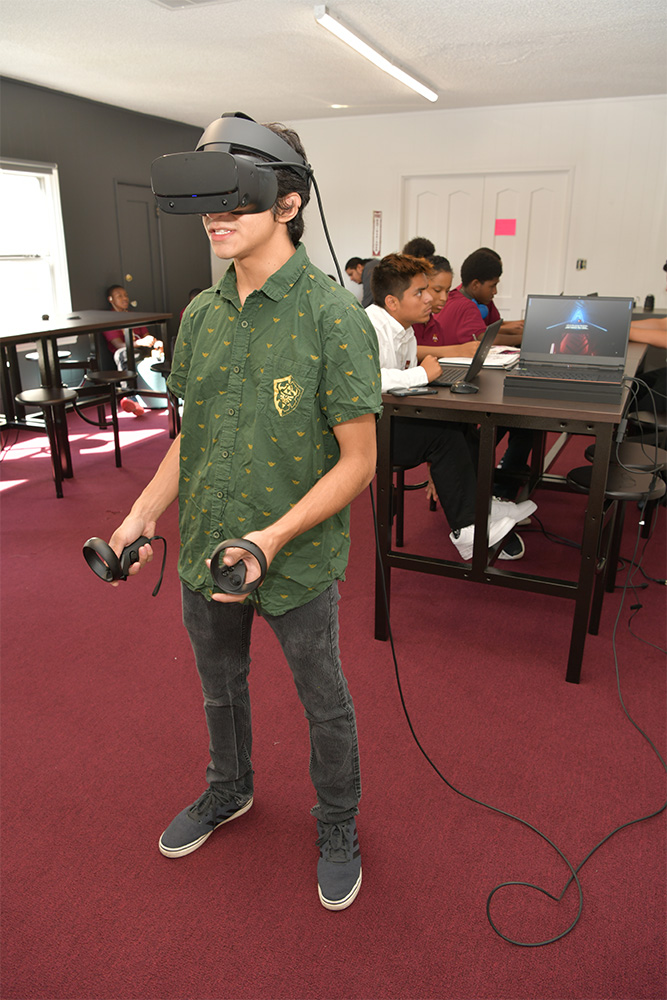

On Flex Friday AMA scholars enjoy its lunch time by hosting its own Tiny Desk. AMA's scholars showcase their talent through Free style poetry, drum circles, DJ'ing , and Music Production. Industry professional sometimes join our Tiny Desk and conduct live workshops on songwriting, DJ'ing, and live performing.
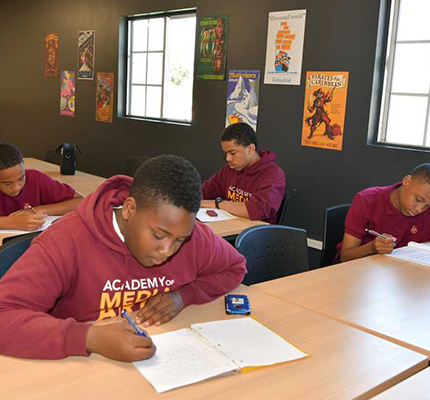


Academy of Media Arts will offer Spanish courses beginning in Year 2 in a face-to-face classroom format; however, in the first year, if a student wishes to take it, s/he can do so through the online coursework with Rosetta Stone.
This is a comprehensive introduction to Spanish emphasizing fundamental communicative-based competencies, grammar, and Spanish-language cultures. Students will actively learn to understand, speak, read and write simple questions and sentences on a variety of familiar topics in Spanish by the end of the second semester. The course goals and objectives are based on Stage I of the World Language Content Standards for California Public Schools (2009).
Spanish 2 continues and expands on the communicative-based competencies, grammar, and Spanish-language cultures learned in Spanish 1. Students will actively learn to understand, speak, and write in extended discourse on familiar topics using an increasing variety of grammatical structures. They will also read simple texts written in Spanish. AMA will also seek to connect scholars with students from secondary schools in Spain or other Spanish –speaking countries via Skype (or other platforms) to create a community of practice. The course goals and objectives are based on Stages I and II of the World Language Content Standards for California Public Schools (2009).
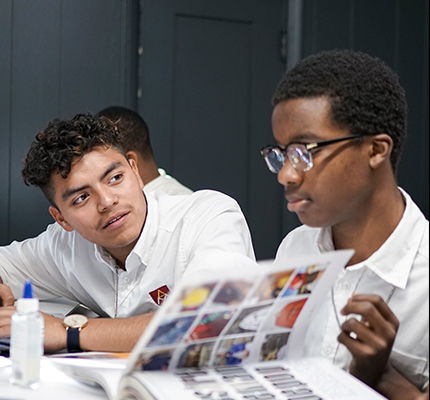
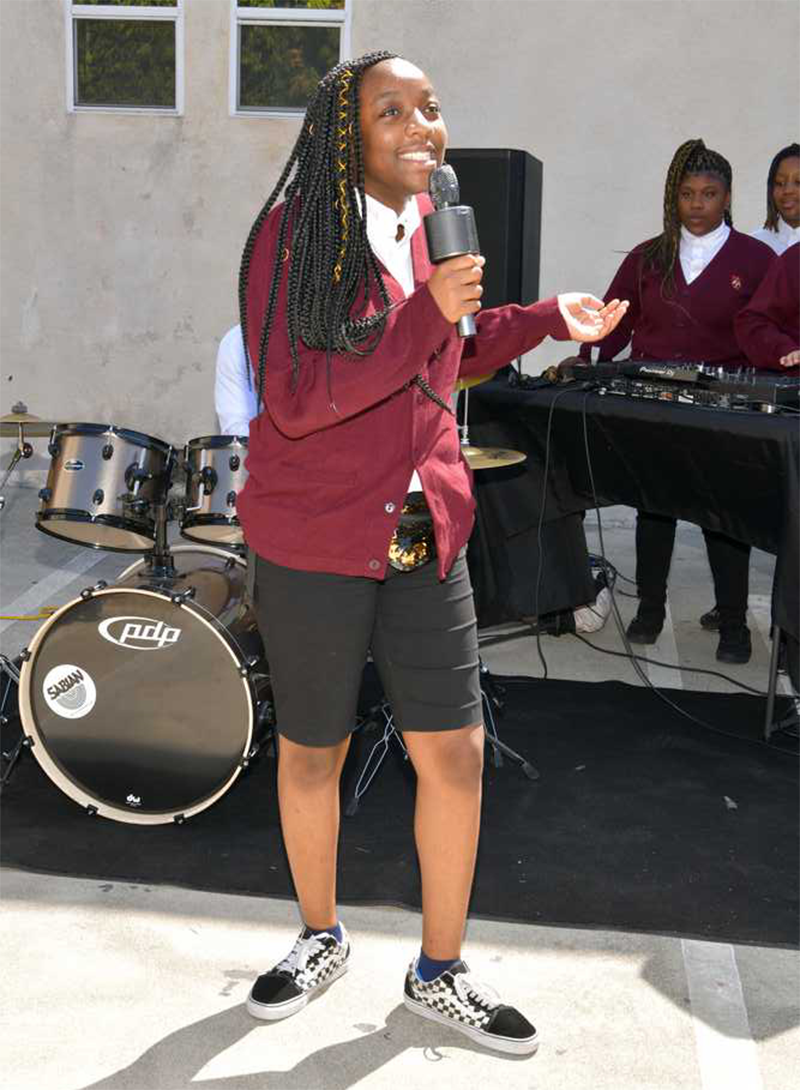

The Visual and Performing Arts offered at AMA will not be the traditional courses that are offered in most high schools. However, one year of Visual Performing Arts will be required of all students to meet the UC "f" requirement for college entrance. Based on the course criteria and guidelines, as well as the goals for VPA found on the UC A-G Guide ( http://www.ucop.edu/agguide/a-g-requirements/f-visual-performing-arts/) the coursework that AMA will submit is aligned. In addition, subsequent courses taken by students will incorporate the unique features described here per approval for electives. The courses will be guided by both the Visual and Performing Arts Framework for California Public Schools, Kindergarten Through Grade Twelve and the Career Technical Education Framework for California Public Schools. Grades Seven Through Twelve and approved by UC Doorways
As described in our instructional design, the arts at AMA will focus primarily on the new media arts and courses will merge science, technology, engineering, art, math, and education into a bridge of career development opportunities within the digital age. Students will also receive instruction in digital citizenship (Common Sense Education) during their Advisory Period.
Exposure to future life changing technologies such as 3D printing/ scanning, Motion tracking, Virtual Reality simulations, and Augmented Reality is essential, as these technologies will be accessible to the public in five to ten years.
This year-long course will be divided into three 12-week modules designed to expose scholars to the career pathways that will guide their new media arts journey through grade twelve. The course will be guided by both the Visual and Performing Arts Framework for California Public Schools, Kindergarten Through Grade Twelve and the Career Technical Education Framework for California Public Schools. Grades Seven Through Twelve. Each introductory cohort curriculum is designed to enable scholars who have never been exposed to 3D design, music or computer science to dive into the content through a peer to peer learning structure and hands-on curriculum to acquire a digital skill.
This course is designed to introduce students to concept art, 3D modeling, and texturing. Scholars will create various types of characters, vehicles, and environment content for a video game. Scholars will use industry professional software (Autodesk Maya and Z-Brush) to design these models. Before creating, scholars will learn the basics of navigation, tools, and general rules for creating objects in 3D. In addition, students will learn texturing as the process for creating color information for 3D models and Adobe Photoshop to create imagery for game development.
In this course, scholars will learn about music from a variety of genres. They will be exposed to new skills, like producing, composing, and reading music. Scholars will also learn how to play the piano or drums, and learn about the components of a recording studio.
Utilizing curriculum from Project Lead the Way (PLTW), students will learn about programming for the physical world by blending hardware design and software development, allowing students to discover computer science concepts and skills by creating personally relevant, tangible, and shareable projects. They will also have an opportunity to use
Students will continue to delve into concepts that advance their skills in 3D design, as they move towards product development. Scholars will learn 3D animation (by utilizing industry software, Z-Brush) and begin to create characters, as well as write storyboards. Additionally, they will learn rigging and coding by combining 3D modeling, textures, environment content, storyboards, and 3D animation which all make-up a video game. Rigging is the process of giving static 3D models the ability to move by inserting "bones". Bones allow for 3D models to be animated and react properly to physics. Bones must be carefully created, as there is a structure to how they are placed and controlled.
Armed with the foundational skills of 3D Design and game development, students will learn scripting/coding as a major process of game development. UNREAL ENGINE 4 will be utilized as it has its own visual scripting language. This scripting language works by creating modules that then affect a game engine. Students go through an entire design process to create a paper prototype and move into creating their chosen “level” using existing and custom 3D models.
As students enter into their final course of their career pathway, they will be exposed to the most advanced concepts around 3D game design, including virtual reality.
Utilizing several tools in both Maya and UNREAL ENGINE 4, scholars are able to achieve different art styles and layouts. The design process is started by sketching out ideas on paper. Preparing a paper prototype is essential for a successful design, it allows the scholars to evaluate their ideas without spending valuable time trying to create a finalized design. Utilizing UNREAL ENGINE 4 the scholars then created their desired levels using existing and custom 3D models. UNREAL ENGINE 4’s drag and drop system allows for multiple iterations and multiple art styles. Each individual scholar will create their own level.
Scholars within the 2.0 Level design skill demonstrate their need to be assigned to an internship site off campus. However, on campus scholars will work in collaboratively in teams. They will be split into three teams: terrain decoration, props, and structures. Instructors will function as the level design lead and guide the teams as necessary. Students will collaborate on the types of assets that they can place in the level. It is important that the teams remain in constant communication and the instructor must facilitate an atmosphere of teamwork and cohesion. Scholars will explore the many area in which architecture is used throughout various industries. Whether it is urban planning, parks & recreation, homes, schools, office building, or city planning.
In this course, scholars will delve more into music notation/reading music, learning musical terms and rhythmic patterns by recreating a movie/television score (or a song by Grammy nominated artists). Scholars will learn to compose for film and explore genres specifically for film and video games.
The Music composition classes will employ some formal and informal approaches to composing music.
Formal approach: Students are taught the basic elements of music fundamentals, reviewing musical terms, notation, rhythm, scales, musical forms, and media genres.
Informal Approach: Instructors will use computers garage band and logic music software to teach participants how technology is the vehicle used to create their composition. Scholars will learn the fundamentals of using Mac computers to create their composition. They will compose music using selected instruments in different genres of music. They will also learn the origin and history surrounding each style.
Scholars within 2.0 Music Production have the opportunity to bring existing songs they’ve created in previous courses and apply the skills they’ve obtained. Similar to all AMA’s 2.0 level scholars, they will be placed in an internship with partners like Otis College or another relevant location that is aligned with his or her project.
Students will experience the major topics, big ideas, and computational thinking practices used by computing professionals to solve problems and create value for others. This course will empower students to develop computational thinking skills while building confidence that prepares them to advance to Computer Science Principles and Computer Science A.
Using Python® as a primary tool, students explore and become inspired by career paths that utilize computing, discover tools that foster creativity and collaboration, and use what they’ve learned to tackle challenges like app development and simulation. This course is endorsed by the College Board, giving students the opportunity to take the AP CSP exam for college credit.
Students collaborate to create original solutions to problems of their own choosing by designing and implementing user interfaces and Web-based databases, as well as creating a game for their friends or an app to serve a real need in their community. This course is aligned to the AP CSA framework.
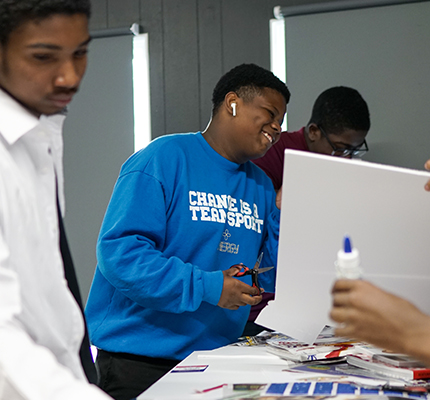
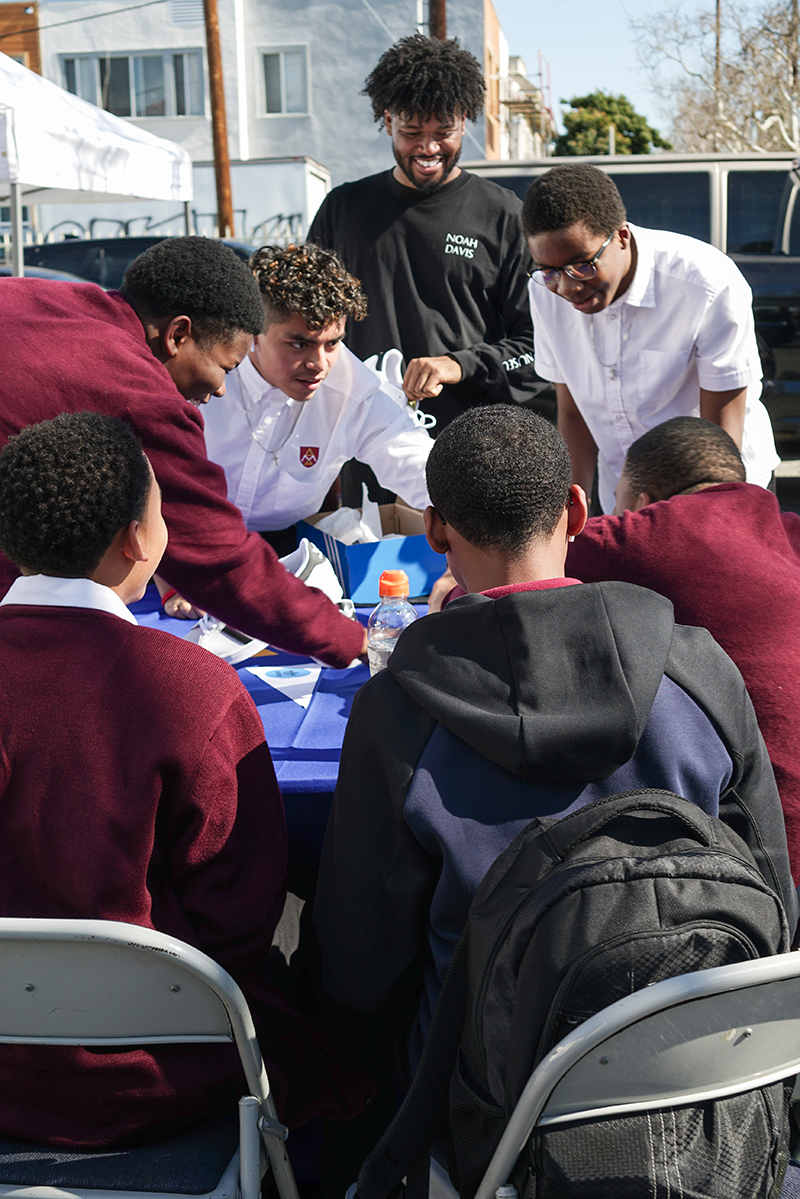

Next Generation Science Standards will be used to guide instruction through a conceptual progression of courses (NGSS for All Students, 2015) with a blended learning model structure in order to provide student centered instruction. The rigor and concepts behind NGSS include the expectation that all students can gain science proficiency when they are provided with opportunities for scientific inquiry and investigations which helps to develop students’ questioning, logical reasoning, analysis, and communication skills. The NGSS will engage students in the use of scientific explanations, evidence, practices, and discourse across disciplinary core ideas with connections to cross cutting concepts. Blended learning leverages media and exposes scholars to virtual labs, photos and videos of settings beyond our community, with connections to scientists and scholars across the globe.
This course is a standards-based study of living things: origins, structures, functions, heredity, growth and development, interactions among, and behavior of living things. Content is built around major biological concepts such as biochemistry and the biology of cells, genetics, evolution, ecology, physiologic systems, and the diversity of living things. Emphasis is placed on the utilization of mathematical, analytical, data acquisition, and communication skills as well as interdisciplinary approaches to discovery. Concepts and skills are reinforced by a strong emphasis on hands-on laboratory experiences and the integration of other branches of science. Applications to society, individuals, and the utilization of technology are included, as is consideration of the impact of human activity on biological systems.
This course is a standards-based study of fundamental chemical concepts, such as atomic theory and its relation to chemical behavior, chemical bonding, the mole and stoichiometry, molecular kinetics, energy relationships, solution dynamics, acids-bases, equilibrium, organic and biological chemistry, and nuclear interactions. Emphasis is placed on the utilization of mathematical, analytical, data acquisition, and communication skills as well as interdisciplinary approaches to discovery. Concepts and skills are reinforced by a strong emphasis on hands-on laboratory experiences and the integration of other branches of science. Applications to society, individuals, and the utilization of technology are included.
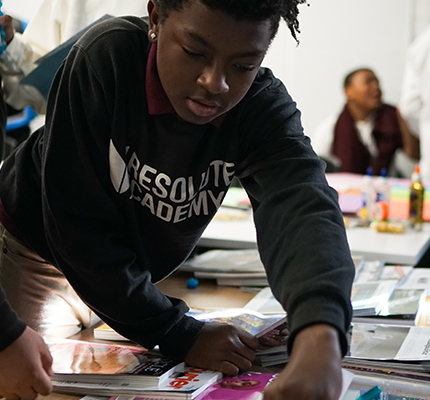
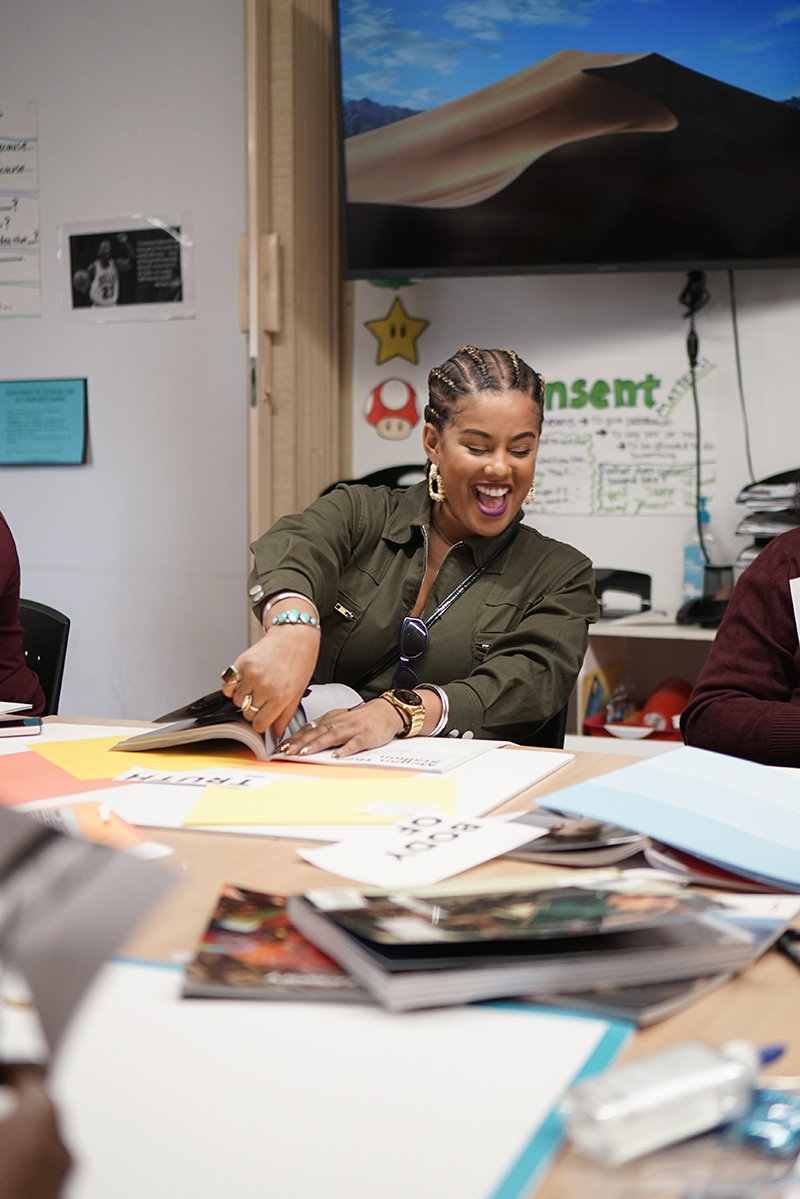

Mathematics will be a rigorous learning experience connected to real world implementation. Scholars will embrace math as more than a series of equations and begin to relate math to careers in technology, engineering, coding, computer science, and game design. Scholars will see how their coursework aligns with the demands of the technology industry. In order to mirror the creative process of solving complex issues, scholars in mathematics will explore, engage, and evaluate equations from various perspectives. Being able to complete and communicate problems through various avenues is indicative of the creativity and diverse mindsets of the scholars we serve. Math will be used as a guiding conversation to understand the relationship between concepts in class, and the mathematical skills needed to build a business and to understand financial literacy. The skills built through math instruction will allow our scholars to be active participants in new tech industries, or to cultivate and create future careers that have yet to exist in today's’ technological career field upon graduation. Scholars will have a common knowledge of academic language/essential terms that build their math fluency and math literacy through each advancing course level. Scholars will have an opportunity to engage in a traditional pathway of math acquisition; however, Geometry may be taken before or after Algebra 1.
This course includes standards from the conceptual categories of Number and Quantity, Algebra, Functions, and Statistics and Probability. Algebra 1 focuses on linear, quadratic, and exponential expressions and functions as well as some work with absolute value, step, and functions that are piecewise defined. Instructional time will concentrate on four critical areas: (1) deepen and extend understanding of linear and exponential relationships; (2) contrast linear and exponential relationships with each other and engage in methods for analyzing, solving, and using quadratic functions; (3) extend the laws of exponents to square and cube roots; and (4) apply linear models to data that exhibit a linear trend.
In this Geometry course, students explore more complex geometric situations and deepen their explanations of geometric relationships, presenting and hearing formal mathematical arguments. Important differences exist between this course and the historical approach taken in geometry classes. For example, transformations are emphasized in this course. Instructional time will focus on five critical areas: (1) establish criteria for congruence of triangles based on rigid motions; (2) establish criteria for similarity of triangles based on dilation and proportional reasoning; (3) informally develop explanations of circumference, area, and volume formulas; (4) apply the Pythagorean Theorem to the coordinate plan; and (5) prove basic geometric theorems.
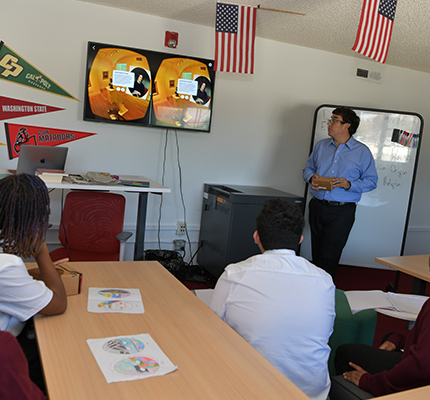
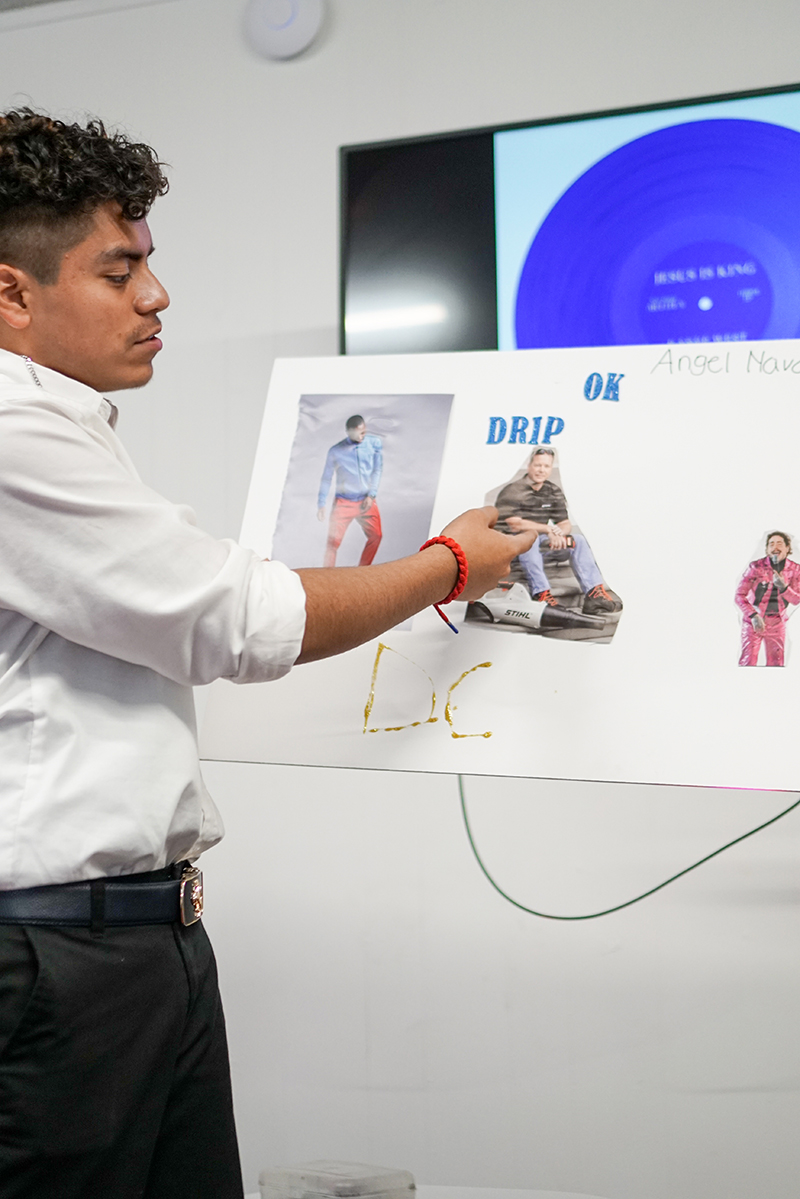

The California Common Core State Standards for English Language Arts and Literacy clearly delineates Standards for Literacy in History/Social Studies, Science, and Technical Subjects for grades 6−12.51 However, it is important to recognize that the Reading standards are intended to complement the specific content demands of the disciplines, rather replace them. Therefore, our curricula will be guided by both the California Content Standards for History/Social Science and the ELA standards. In history/social studies courses, students need to be able to analyze, evaluate, and differentiate primary and secondary sources, as well as read complex informational texts with independence and confidence. Project-based learning, as well as other active learning strategies are critical to engaging students in the learning of history and can help students with making connections from the past to the present.
This history/social science course examines the major turning points of the modern world from approximately 1750 to the present. Students should develop an understanding of the historic as well as the contemporary geographic, social, political and economic contributions of various world cultures and their challenges. Students will also study the physical, cultural, political and economic geography of the world by applying an understanding of the five themes of Geography, which include location, place, region, movement and human-environmental interaction.
In this year-long course, the Stanford-developed curriculum, Read like a Historian, will be utilized.52 The goal of this curriculum is to engage students in historical inquiry while improving literacy skills, fostering a love of learning and of history, and increasing critical thinking and reading comprehension. Students will learn about the Vietnam War, women's suffrage, civil rights, the Great Depression and other major events in U.S. history by analyzing journal writings, memoirs, speeches, songs, photographs, illustrations and other documents of the era. Each lesson revolves around a central historical question and features a set of primary documents designed for groups of students with a range of reading skills. This curriculum teaches students how to investigate historical questions by employing reading strategies such as sourcing, contextualizing, corroborating, and close reading. Instead of memorizing historical facts, students evaluate the trustworthiness of multiple perspectives on historical issues and learn to make historical claims backed by documentary evidence.
In this year-long course, will pursue a deeper understanding of the institutions of American Government. In addition, they draw on their studies of world and American history and geography and other societies to compare differences and similarities in world governmental systems today. This course is the culmination of history/social sciences classes to prepare students to solve society’s problems, to understand and to participate in the governmental process, and to be a responsible citizen of the United States and the world. The second semester focuses on student mastery of the fundamentals in order to appreciate how the principal concepts of economics relate to each other and understand the structure of economic systems. Students will use economic concepts in a reasoned, careful manner in dealing with personal, community, national and global economic issues. They will engage in a PBL around creating their own business enterprise in connection with their career pathway.
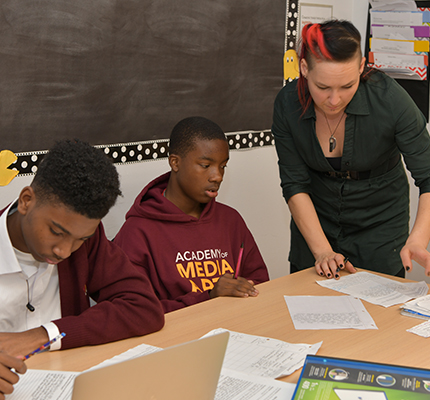
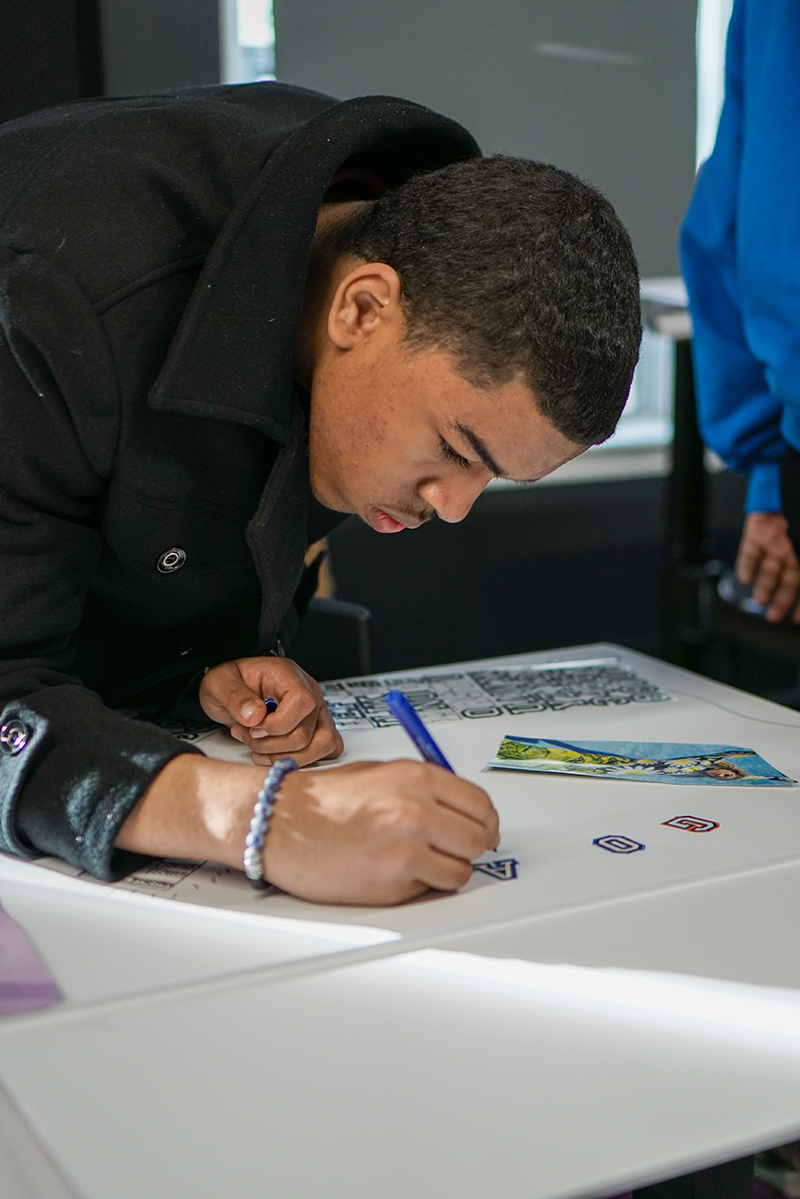

The CCSS for ELA/Literacy are rigorous, research-based standards designed to ensure educators truly prepare students to be fully literate in the twenty-first century. From close reading and analyzing critical works of literature and informational texts to completing research to engaging in collaborations, students must be able to listen, speak, read and write proficiently. These standards also help build creativity and innovation, critical thinking and problem solving, collaboration and communication - the 21st century skills that AMA strives to embody. To further solidify application of knowledge and skills, all scholars will engage in PBL projects, curated by the Buck Institute, each semester that highlight the media arts. For example, in grade 9, scholars will participate in Cyrano’s Funk, which focuses on the classic story of Cyrano de Bergerac by Edmond Rostand. Scholars will complete assignments that parallel character traits and literary themes in the play to their favorite music. They will ultimately assemble a song or spoken word and create a live performance or video to showcase to an audience.
This course exposes students to classic and contemporary fiction and nonfiction texts, all aligned to the Common Core State Standards for Grade 9. These texts become a launch for writing in three genres: argumentative, expository, and narrative. The course also includes a thorough review of the principles of grammar and punctuation, and strategies of effective writing.
This course guides students in developing strategies to construct meaning and interact thoughtfully with all genres of literature and nonfiction texts. Writing activities are extensions of experiences developed through reading literary and nonfiction works. Students will engage in a variety of expository and creative writing tasks that connect literature and their life experiences. Students will use writing process activities in a variety of genres including persuasive, expository, narrative, and literary analysis of texts. Students also receive instruction in the conventions of written language, effective oral communication, and research techniques.
© Copyright 2024 Choice Group New Media Arts Academy